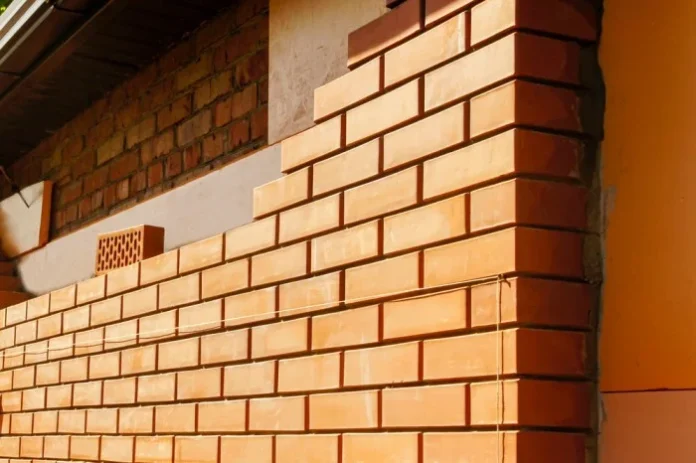What is a cavity wall?
A cavity wall, to put it in simple words, is a masonry construction comprised of two independent walls that run parallel to one another. These walls, which are sometimes referred to as leaves, are connected by metal links or building bricks. A space exists between those two walls (usually under 10cm or just under 4 inches).
The technique of blowing insulation material into the space between your inner and outside brickwork is known as cavity wall insulation. This is accomplished by carefully drilling several holes into the exterior of your house, which then provides access to the hollow space. After that, the material is blasted into these holes using hoses. The substance is then supposed to fill the hole and spread out throughout the cavity.
Cavity walls can be used at any place in construction and can be load-bearing or not. The inner wall is often thicker than the outer wall in circumstances when a hollow wall may support a load. As a result, the outside wall mostly acts as a façade while the inner wall may do the bulk of the labor.
Cavity wall construction is used in many older masonry buildings, both commercial and residential. The space is often filled with cavity wall insulation consisting of foam or mineral wool in newer structures that employ this technique. Using contemporary insulation materials, this insulation enables the house or structure to retain heating or cooling more effectively.
Pros and Cons of Cavity Wall Insulation
Most brick, block, or stone walls appear to be one cohesive piece of architecture from the outside. However, those walls frequently have a gap hidden inside them that spans the entire width and height of the wall. There is no oversight or construction fault with this gap. In truth, these hollow walls—the word used to describe this style of a gapped wall—serve several crucial functions.
It’s critical to keep the material’s intended use in mind as we weigh the advantages and downsides of cavity wall insulation.
Pros of cavity walls
Moisture abatement
Moisture protection is a cavity wall’s principal benefit. The inner leaf stays dry since there isn’t a solid wall to absorb all the moisture from the exterior walls and bring it inside. Additionally, cavity walls can provide all the essential moisture protection when equipped with a damp-proof course, which is a row of bricks covered in a water-resistant membrane.
Insulation for heat
A key benefit is that a hollow wall insulates more effectively than a solid wall of the same overall thickness. The air is contained, and there isn’t any thermal bridging, so there is less heat loss in the winter and less conditioned air escaping in the summer.
Sound Insulation
Additionally, sound cannot be transferred between the leaves since there is no internal support. This is useful for establishing silent rooms or avoiding excessive noise from the street or nearby neighbors entering a house or workplace.
Material Saving
Fewer materials are needed to create a space between the two leaves. The gap in conjunction with the metal ties offers a robust yet affordable form of construction as opposed to employing broader blocks or the third course of bricks.
Cons of cavity walls
Building requires expertise
The majority of framing teams can construct a straight wall with ease, but a straight, uniformly spaced cavity wall requires the expertise of an experienced and more expensive mason. This increases the project’s cost and might result in lengthier lead times while looking for a craftsman who can complete the task.
Buildup of dirt and sediment
Sediment, such as soil, debris, flaking mortar, and other elements, can gather in the hollow of ancient structures. The primary advantage of cavity wall construction might be lost if this sediment permits heat bridging.
Costly alterations and fixes.
Property owners must hire professionals to drill holes in the hollow walls and fill them with insulation in structures where some additional insulation is desired. When opposed to tearing down drywall for a do-it-yourself insulation project, this method of insulation is more costly. The metal links holding the two leaves together might rust and deteriorate with time, which is another thing to take into account. This is particularly true when condensation or water infiltration causes the brick connections to corrode and separate from the outside wall. Due to the leaves’ potential to detach and weaken the structure, this may be a safety risk.
Conclusion
We may reasonably infer from the explanation above that installing hollow walls as external walls will help you control moisture incursion in your home. The benefits of a cavity wall extend to both thermal and acoustic insulation.







